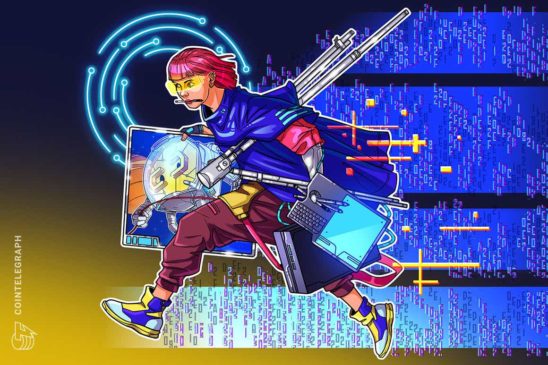As the ETHDenver developer conference gets underway, the incubator ConsenSys Mesh told Cointelegraph that it’s planning a Friday announcement regarding a new addition to its portfolio.
The team will debut details about TreeTrunk, a nonfungible token, or NFT, platform that aims to eliminate the risk of centralized platforms failing to pay royalty payments from secondary sales correctly or on time. TreeTrunk is launching a beta release on the Polygon Mumbai testnet.
According to the company, TreeTrunk has introduced a pioneering smart contract that collects and distributes royalty payments from the secondary sales of NFTs immediately and securely on the blockchain. Current NFT standards may not enforce instant collection or distribution of royalties on a chain to the creator, and less so to both creators and distributors.
Cointelegraph spoke to John Wolpert, co-founder of TreeTrunk and head of R&D at ConsenSys Mesh, to learn more about this new contribution to the Ethereum ecosystem.
“Supplying an important new ERC to the community as a standard and open-source reference implementation is serving the long term vision of expanding what NFTs can do on the blockchain.”
Part of that vision to onboarding newcomers into the blockchain space also includes building long-term financial empowerment for artists and creators where “perpetual distribution and royalty networks move their work and expand their paying audience,” added Wolpert.
He points out that NFT artists, just like traditional artists, may need to reach a certain level of popularity to see a sustainable profit. For this reason, TreeTrunk smart contracts distribute royalty payments to collectors who make and sell authorized digital prints. This approach, according to Wolpert, offers influencers the opportunity to construct an “NFT family tree” of first- or second-generation NFT and syndicate prints holders who can buy into a “community of inclusion” that generates passive income.
Here’s what we’re building: TreeTrunk #NFT https://t.co/lTtJxHPiJ8.
Create and own private, exclusive original art.
Make unique signed and numbered prints.
Build a royalties empire.
Join our Discord and help us make great decisions about the product: https://t.co/npgoLbdUld pic.twitter.com/f8E8x8wrAz
— John Wolpert (@jwolpert) November 6, 2021
Related: LooksRare team cashes out $30M in WETH, faces community backlash
The technique that TreeTrunk uses to create and exchange authorized copies that can prove their relationship to an original NFT is called crypto-lithography. Similar to the lithographic printing process, zero-knowledge cryptography technology “shields the original NFT while letting people see, enjoy and sell unique, verifiable prints,” said Wolpert.
On the ETHDenver stage, conference goers can expect one of the NFT artists on the platform to herald the launch of the TreeTrunk marketplace. A select group of artists were chosen to submit one special artwork to TreeTrunk for early collectors to begin testing before opening up to more artists.
Ira P. Rothken, attorney and TreeTrunk co-founder, also emphasized that it was important to the company to improve on the way NFTs handle legal rights and artists control their intellectual property.
“It’s no longer a game of guessing what the license agreement terms are, especially on secondary market transactions. Unlike the previous NFT standard, with TreeTrunk the license agreement is embedded in the NFT metadata itself.”
Related: ConsenSys acquires MyCrypto to ‘improve the security’ of its products
ConsenSys Mesh acts as both an accelerator and incubator under the ConsenSys ecosystem that invests in Web3 projects. Its portfolio of companies includes MetaMask, Infura, Gitcoin and Decrypt.



